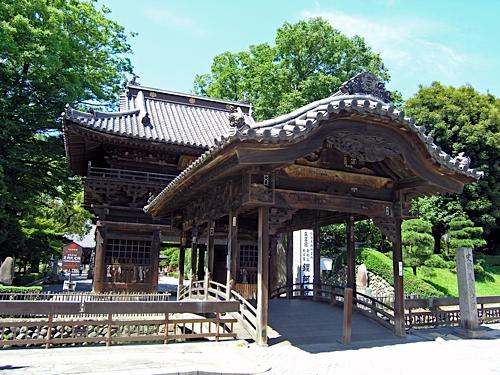History
This site exemplifies one of the earliest forms of castles, a fortified residence. It is a square plot of land surrounded by a moat and guarded with gates at the entrances. The Ashikaga built this home in the mid 1100's. Ashikaga Yoshikane established the family temple on these grounds in 1196 and the site eventually became Bannaji Temple.
Visit Notes
The temple and gates are very nice making this a worthwhile stop if you're in the area. It's just a short walk from the station and is only a few stops away from Kanayama Castle on the same train line.
| Castle Profile | |
|---|---|
| English Name | Ashikagashi Yakata |
| Japanese Name | 足利氏館 |
| Alternate Names | Ashikagashitakuato |
| Founder | Ashikaga Yoshikane |
| Year Founded | mid 1100's |
| Castle Type | Fortified Manor |
| Castle Condition | No main keep but other buildings |
| Designations | Top 100 Castles, National Historic Site |
| Historical Period | Pre Edo Period |
| Features | gates, water moats |
| Visitor Information | |
| Access | Ashikagashi Sta. (Tobu Isezaki Line), 15 min. walk; Ashikaga Sta. (JR Ryomo Line), 10 min. walk |
| Visitor Information | |
| Time Required | |
| Website | http://www.city.ashikaga.tochigi.jp/000index data/200sanmeisyo/020bannaji/bannaji.html |
| Location | Ashikaga, Tochigi Prefecture |
| Coordinates | 36° 20' 15.76" N, 139° 27' 6.05" E |
|
|
|
| Admin | |
| Added to Jcastle | 2007 |
| Contributor | Eric |
| Admin Year Visited | 2007 |
| Admin Visits | June 23, 2007 |














Enable comment auto-refresher
FurinkazanDaimyo
Permalink |
ARTShogun
Permalink |
ARTShogun
Permalink |
RaymondWDaimyo
Permalink |
RonSAshigaru
Permalink |
RonSAshigaru
Permalink |
Jcastle.oldHatamoto
Permalink |
RonSAshigaru
Permalink |
RaymondWDaimyo
Permalink |
Anonymous user #1
Permalink |